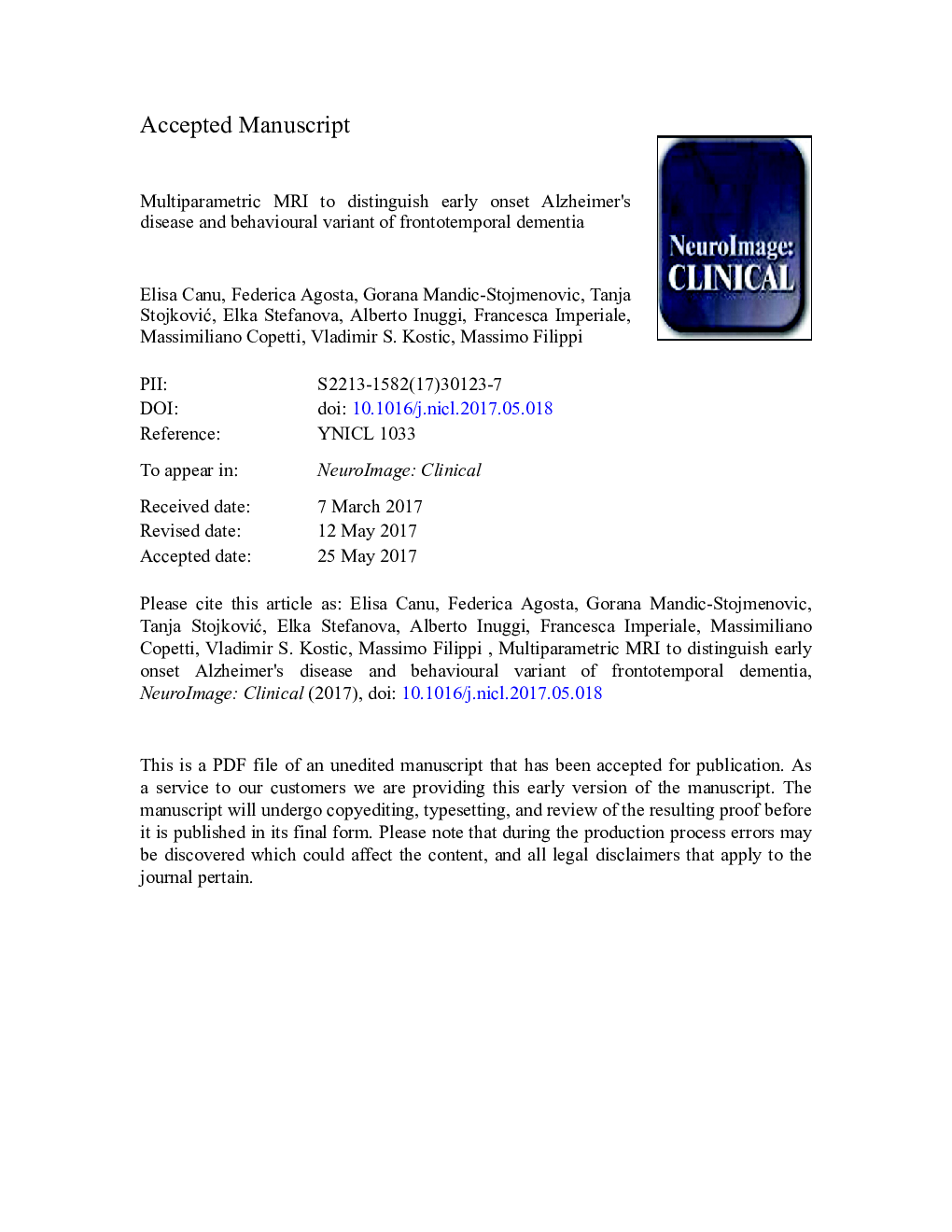| Article ID | Journal | Published Year | Pages | File Type |
|---|---|---|---|---|
| 8688471 | NeuroImage: Clinical | 2017 | 41 Pages |
Abstract
This prospective study explored whether an approach combining structural [cortical thickness and white matter (WM) microstructure] and resting state functional MRI can aid differentiation between 62 early onset Alzheimer's disease (EOAD) and 27 behavioural variant of frontotemporal dementia (bvFTD) patients. Random forest and receiver operator characteristic curve analyses assessed the ability of MRI in classifying the two clinical syndromes. All patients showed a distributed pattern of brain alterations relative to controls. Compared to bvFTD, EOAD patients showed bilateral inferior parietal cortical thinning and decreased default mode network functional connectivity. Compared to EOAD, bvFTD patients showed bilateral orbitofrontal and temporal cortical thinning, and WM damage of the corpus callosum, bilateral uncinate fasciculus, and left superior longitudinal fasciculus. Random forest analysis revealed that left inferior parietal cortical thickness (accuracy 0.78, specificity 0.76, sensitivity 0.83) and WM integrity of the right uncinate fasciculus (accuracy 0.81, specificity 0.96, sensitivity 0.43) were the best predictors of clinical diagnosis. The combination of cortical thickness and DT MRI measures was able to distinguish patients with EOAD and bvFTD with accuracy 0.82, specificity 0.76, and sensitivity 0.96. The diagnostic ability of MRI models was confirmed in a subsample of patients with biomarker-based clinical diagnosis. Multiparametric MRI is useful to identify brain alterations which are specific to EOAD and bvFTD. A severe cortical involvement is suggestive of EOAD, while a prominent WM damage is indicative of bvFTD.
Keywords
Corpus callosumTFCEILFEOADbvFTDMNIACE-RDMNRSNSLFNVILate onset Alzheimer's diseaseEarly onset Alzheimer's diseaseResting state networkthreshold-free cluster enhancementLoadDiffusion tensorDiagnosisindependent componentResting state functional MRIBehavioural variant frontotemporal dementiadefault mode networkcortical thicknesssuperior longitudinal fasciculusinferior longitudinal fasciculusgrey matterwhite matterCSFCerebrospinal fluidMontreal Neurological Institute
Related Topics
Life Sciences
Neuroscience
Biological Psychiatry
Authors
Elisa Canu, Federica Agosta, Gorana Mandic-Stojmenovic, Tanja StojkoviÄ, Elka Stefanova, Alberto Inuggi, Francesca Imperiale, Massimiliano Copetti, Vladimir S. Kostic, Massimo Filippi,
